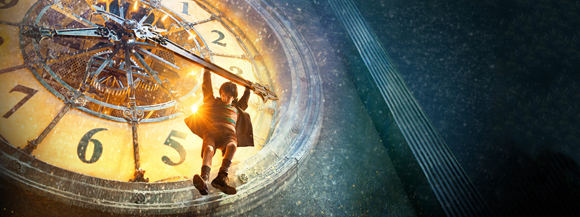Martin Scorsese is not the kind of director one would expect to make a family movie. The director of horror-thrillers like Shutter Island and mob dramas such as Goodfellas, his portfolio mostly consists of gritty yet great R-rated affairs. Nevertheless, he breaks new ground this year, creating an ethereal wonderland that blends the Industrial Revolution with a hint of magic in his latest directorial effort, Hugo.
The movie’s main character, Hugo, is an orphaned boy living amongst the clockwork in a Parisian train station that seems like something out of both a fairy tale and a Dickens’ novel. The story begins with him tinkering away at an Industrial-era robot with a potentially important message from his recently deceased father. Shortly after this exposition, he’s caught stealing mechanical parts by grouchy toy shop owner, George Melies.
Recognizing his talent for mechanics, Melies puts him to work in the shop to make him pay for the stolen parts. Eventually, Hugo learns about Melies’ painful past as a long-forgotten filmmaker and pioneer and sets his mind towards uncovering the connection between Melies and his robot.
The movie’s unusual plot is engaging and the mystery is never ceases to be interesting. Intermixed throughout the main plot are the stories of the other employees of the train station from the police officer to the other shop owners. Their quirky personas fill the downtime littered throughout story, giving it a weightier feel.
Despite the serious storyline, there is no shortage of humor. Hugo is constantly on the run from Inspector Gustav, the station officer whose sole purpose is to maintain order and send orphans to the orphanage.
The set design coupled with 3-D cameras creates a superb visual atmosphere. 3-D in most movies is generally mediocre at best, but Hugo uses it to bring the intricate clockwork and station architecture to life. There’s one particular scene Hugo is hiding in a hanging clock that looks as though it is floating in front of you. The chase scenes and sweeping open shots illustrate the attention to detail given in creating a concrete environment that looks like it was clipped out of photography from that era. The intricacy of the clockwork that the movie revolves around is even more vivid through the extra dimension.
The heart of this story is about the birth of film and the contributions of an early, visionary filmmaker. While characters such as Hugo are fiction, George Melies and his story are mostly true. The movie even shows clips from his classic early pictures such as A Trip to the Moon, the first science fiction film ever.
Despite being unusual fare for Scorsese, this is his most personal film. Scorsese’s own life parallels Hugo’s since his own childhood was largely confined to his room due to sickness and revolved around his pet projects. In Hugo’s case it is mechanics, while Scorsese’s is of course film.
The cast is filled with talented actors in both the main and minor roles. Asa Butterfield is on par with any of the adults as Hugo. He really displays his acting chops in both moments of joy and complete despair. Ben Kingsley plays Melies with an almost uncanny appearance to the actual person and the aura of a man depressed and defeated by the world around him. Sacha Baron Cohen plays Inspector Gustav with a paradoxically goofy yet slightly creepy charm.
At over two hours length, the movie can run a bit long for some people. There are a few moments where it feels as though nothing is happening, although these scenes are small and still manage to provide characterization. The fantastic world design and light humor will please children, while the intricate story and themes of renewal and timelessness will appeal to adults. This is one of those rare films that captures a world that is both fantastic and close to home, and it will stay with you long after the credits are roll.
